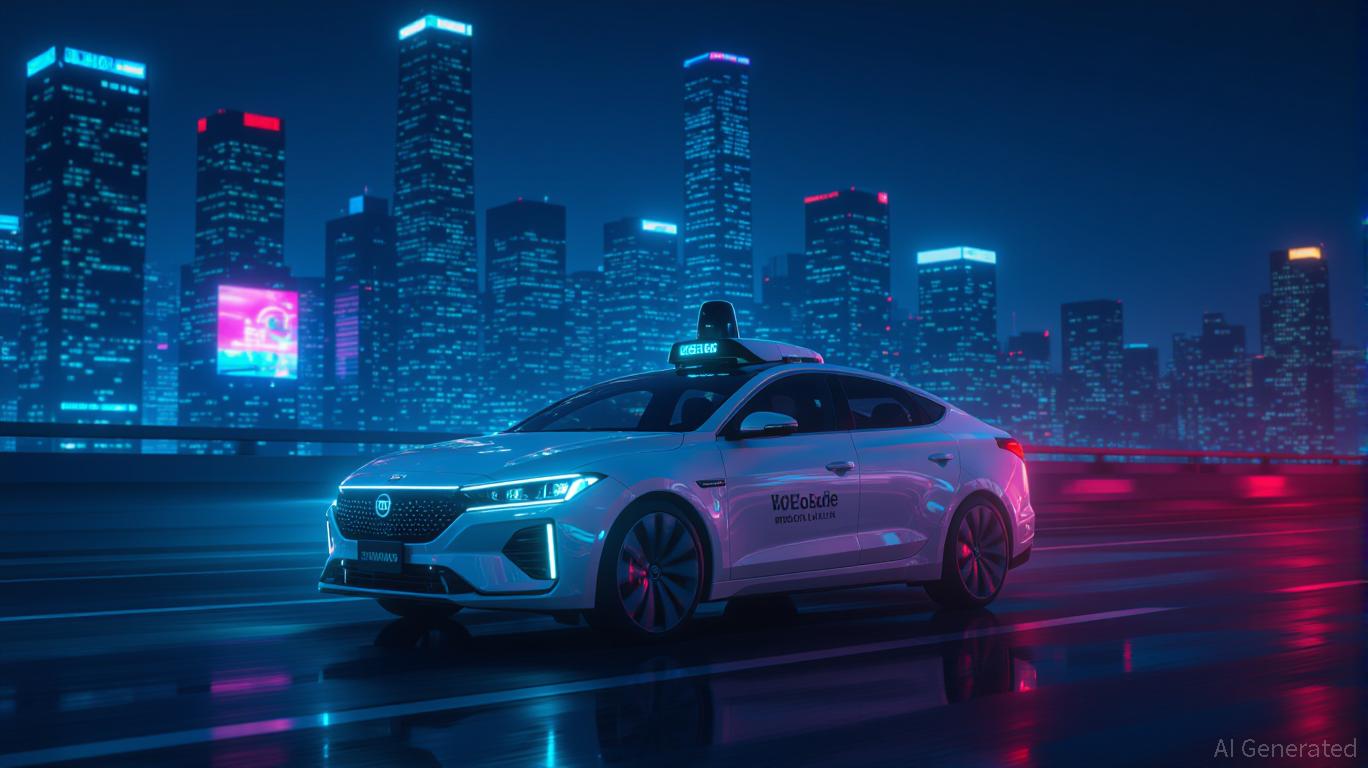WeRide's HPC 3.0 Platform and Its Implications for Autonomous Driving Commercialization

The autonomous vehicle (AV) industry is at a pivotal
, with companies racing to commercialize Level 4 and Level 5 self-driving solutions. Among the contenders, WeRide Inc. (Nasdaq: WRD) has emerged as a standout innovator, leveraging advanced computing to redefine the economics and scalability of autonomous mobility. The recent launch of its HPC 3.0 high-performance computing platform—developed in collaboration with Lenovo and powered by NVIDIA's DRIVE AGX Thor chips—marks a critical milestone in the company's journey to dominate the AV market. This platform, integrated into the Robotaxi GXR, not only accelerates WeRide's technical capabilities but also reshapes its financial and strategic trajectory.Strategic Impact: Redefining Cost Efficiency and Global Scalability
The HPC 3.0 platform is a game-changer for WeRide's commercialization efforts. By reducing the cost of the autonomous driving suite by 50% and the total cost of ownership (TCO) by 84% over its lifecycle compared to its predecessor (HPC 2.0), the platform addresses one of the industry's most persistent challenges: economic viability. These cost reductions are achieved through a combination of hardware consolidation (e.g., integrating Ethernet gateway, CAN gateway, and inertial navigation systems into a single unit) and mass production optimization. For context, the HPC 3.0's dual
DRIVE AGX Thor configuration delivers 2,000 TOPS of AI compute power, a 200% leap over previous systems, while maintaining ASIL-D safety compliance and operating in extreme temperatures (-40°C to 85°C).This technological leap enables
to deploy its Robotaxi GXR in diverse international markets, including the Middle East, Southeast Asia, and Europe—regions where regulatory hurdles and infrastructure constraints have historically slowed AV adoption. The platform's global certifications (AEC-Q100, ISO 26262, IATF 16949) and environmental resilience further validate its readiness for mass deployment. By 2025, WeRide aims to expand its Robotaxi fleet to 50 units in Abu Dhabi via its partnership with , while also launching fully unmanned operations in Beijing and Guangzhou.Financial Implications: A Path to Profitability
The financial implications of HPC 3.0 are equally compelling. In Q1 2025, WeRide reported RMB72.4 million in revenue (US$10.0 million), with a 35.0% gross margin—a significant improvement from the 2024 full-year gross margin of 27.6%. The company's ability to achieve such margins despite heavy R&D investment (RMB1,091.4 million in 2024) underscores the platform's cost-reduction potential. Analysts project that HPC 3.0 will further compress operational expenses, potentially boosting gross margins to 40-45% in 2025 as the Robotaxi GXR scales.
Moreover, the platform's 84% TCO reduction over its lifecycle could translate to a 50% improvement in EBITDA margins by 2026, assuming current deployment rates. WeRide's balance sheet also appears robust, with RMB4,888.4 million in cash as of December 2024, providing ample runway for expansion. The recent $100 million equity investment from Uber further signals confidence in the company's commercialization strategy.
Competitive Positioning: Outpacing Peers in Innovation and Deployment
WeRide's HPC 3.0 platform positions it to outperform peers in both technical and commercial metrics. While competitors like
and Waymo rely on high-cost, custom hardware, WeRide's partnership with NVIDIA and Lenovo enables industry-leading compute efficiency at scale. The platform's 2,000 TOPS of AI power rivals Waymo's Orion system but at a fraction of the cost. Meanwhile, Tesla's Optimus platform, though powerful, lacks the same level of safety certification and global regulatory approval.In terms of deployment, WeRide's 30-city footprint across 10 countries (including regulatory approvals in China, UAE, Singapore, France, and the U.S.) gives it a geographic edge over rivals like Cruise and Aurora. The company's diversification into logistics (robovan W5) and sanitation (robosweeper) further strengthens its revenue streams, reducing reliance on ride-hailing alone.
Investment Thesis: A High-Growth Opportunity in a High-Conviction Sector
For investors, WeRide's HPC 3.0 platform represents a strategic inflection point. The company's ability to reduce costs while enhancing performance aligns with the industry's long-term trends: scalability, safety, and cost efficiency. With the global AV market projected to grow at a 19.9% CAGR from 2025–2030, WeRide is well-positioned to capture a disproportionate share of this growth, particularly in markets where its global certifications and partnerships provide a competitive moat.
However, risks remain. Regulatory delays, cybersecurity concerns, and public acceptance of AVs could slow adoption. Additionally, WeRide's net loss of RMB2.5 billion in 2024 highlights the need for continued R&D investment. That said, the company's $100 million Uber infusion and strong cash reserves mitigate near-term liquidity risks.
Investment Recommendation: Investors with a 3–5 year horizon should consider WeRide as a high-growth, high-conviction play in the AV sector. The stock's volatility reflects its speculative nature, but the HPC 3.0 platform's cost-reduction potential and WeRide's global expansion strategy justify a long-term position. Monitor Q2 2025 results for confirmation of improved margins and deployment progress.
In conclusion, WeRide's HPC 3.0 platform is not just a technical achievement—it is a strategic catalyst for the commercialization of autonomous driving. By bridging the gap between innovation and economics, the company is poised to lead the next wave of mobility transformation, offering investors a compelling opportunity to participate in a $214 billion market by 2030.
Sign up for free to continue reading
By continuing, I agree to the
Market Data Terms of Service and Privacy Statement

Comments
No comments yet